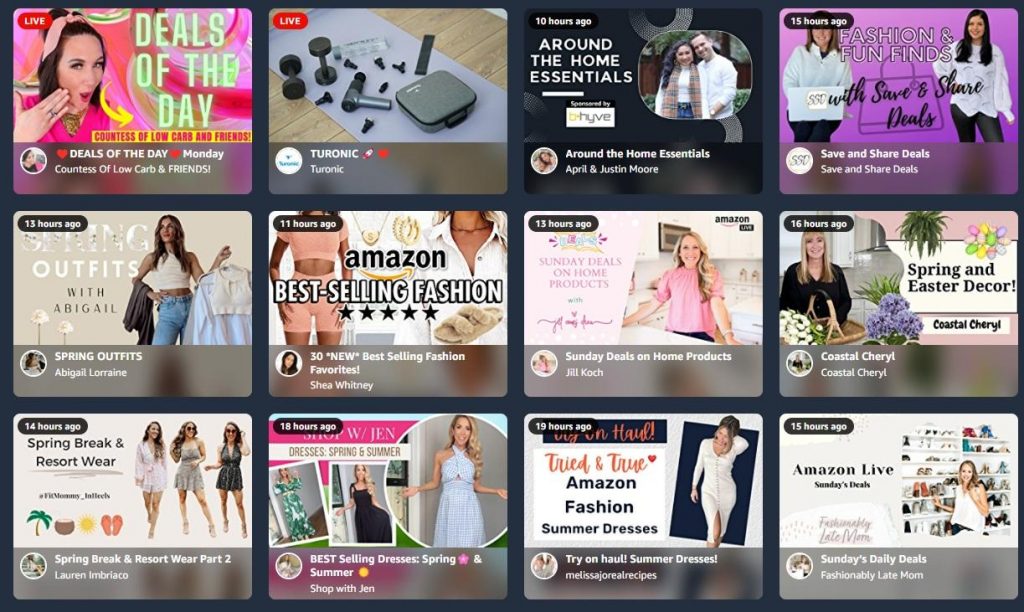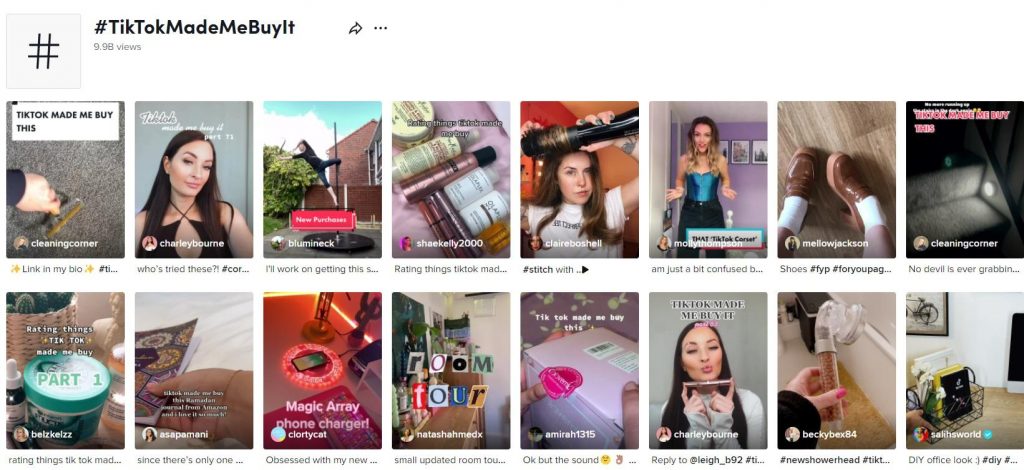The popularity of video has led to a new kind of trending content consumption – live streaming, and with it, live commerce. The popularity of video shopping shouldn’t surprise you. In a 2022 survey found that as many as 74% of millennials said they find videos helpful when comparison shopping.
So, what exactly is “live commerce”?
Live commerce is a combination of live streaming and online shopping. In other words, audiences get the entertainment value of a live stream, including everything from watching a live video to reacting through comments and actions, while experiencing the convenience of shopping from an online store, all at the same time.
How powerful can it be?
The success of this live commerce format is evident when you look at top streaming campaigns. Taobao Live, for instance, racked up $7.5 billion in total transaction value within the first 30 minutes of Alibaba’s Singles’ Day (similar to Black Friday in the US) presales campaign in 2020.
So, how can you harness the power of live commerce for your online store marketing? We will answer all these questions and more. In this post we cover:
- What is Live Commerce and What Makes it so Potent?
- Top Benefits of Live Commerce
- Getting Started with Live Commerce
- Strategies to Win at Live Commerce
Let’s get started.
What is Live Comerce and What Makes it So Potent?
The launch of Alibaba’s Taobao Live in May 2016 is often considered the origin point for mainstream live commerce. Taobao introduced a new form of e-shopping in which a live stream hosted an eCommerce store, so users could be entertained and shop at the same time.
[Source: Medium]
Live shopping grew quickly from there, with an estimated $5.6 billion in sales were generated from live commerce in the US alone during 2020.
As we know, the pandemic brought about a massive change in shopping behavior, speeding up the transition to online commerce. This has forced retailers to relook at how they could deliver the personalized experience of shopping at a brick-and-mortar store when selling online?
Live commerce proved to be an answer. It added a human element to online shopping, allowing consumers to watch and engage with a live person while they describe and use products.
Amazon Live is a great example of how influential live commerce can be for a business.
Amazon Live features live streams by content creators and brands who stream directly from Amazon’s newly launched app Amazon Live Creator. (You can download the app here.) While the hosts talk about the products and use them on a live stream, shoppers can browse through products displayed in a carousel below the video.
And the potential? eCommerce traffic!
Amazon Live’s beta tester “Watch Ya’ Mouth” (card game maker) claimed to have increased traffic to their product page by 5X using live streaming. Live commerce, however, is not just about adding the human touch. You can see the video here.
Live streaming is one of the most popular forms of online social interaction today. According to Finstock, the popular live streaming platform Twitch gets an average of 30 million visitors daily. Embracing live commerce is also a matter of future-proofing your brand.
As brands focus on selling online, they have to keep up with current trends, and live streaming is clearly one of the most popular methods of content consumption.
The Top Benefits of Live Commerce
Live Chat Increases Engagement and Conversions
Live streams are engaging, entertaining, and immersive. Users can participate in a live stream through comments, reactions, and live chat. They get to see unedited, unfiltered content, which is attractive to today’s viewers. This means that a live stream has the potential to draw in a higher number of viewers and keep customers engaged for a longer period while simultaneously reducing your store’s bounce rate.
Bonus Content: 4 Ways eCommerce Sites Can Reduce Their Bounce Rates
Since the live stream is about the products, it helps increase conversions. Viewers see first-hand how the product works, how it is used, and the benefits of buying it. This increases their awareness levels and greatly increases the chances of conversions. Add one-time coupon codes to this mixture, and you have a recipe for success!
In fact, companies have reported a conversion rate of close to 30%, which is 10X higher than the conversion rate through conventional strategies.
Live Commerce Enhances Brand Appeal and Fosters Loyalty
Brick-and-mortar stores can invoke brand loyalty through personal service. Customers can find the same product in multiple stores, it’s how the store makes them feel – the customer experience – keeps them coming back for more.
Bonus Content: The Ultimate Guide to Lead Generation Using Live Chat
With eCommerce, delivering personal service is a challenge, and so is creating brand loyalty. The competition among eCommerce stores, after all, is exponentially higher than among physical stores.
Live commerce definitely adds an element of uniqueness and distinction to a brand. Unlike conventional product videos and websites, a live stream has someone speaking to viewers in real-time. Viewers connect to the speaker, interact with them, and bond with the brand. This adds appeal and distinguishes the brand from the competition while nurturing brand loyalty.
Also be sure to check out our guide to Top eCommerce Branding Strategies to work live steaming and shopping into your overall branding.
Getting Started with Live Commerce
To get started with live commerce, you need to choose which platform you will go live on. There are a few methods you can choose from:
- Dedicated live shopping platforms and apps
- Developing your own live shopping store
- Using social media platforms that have live shopping built-in
Let’s take a closer look at each.
1. Dedicated Live Shopping Platforms/Apps
Live shopping apps allow brands to create an account and launch a live stream with an online shop. This targets the audience already active on the app.
Similar to social media platforms, users join these apps to watch live streams and shop. Brands form the other end of the spectrum, creating the streams and promoting their products.
The advantages of this method are that you get to launch your brand on technology that is ready to use, and cater to a pre-existing audience.
Here are some popular live commerce platforms:
The disadvantage of hosting on an existing live commerce platform is that there are limitations to how much you can customize your presence. Additionally, the platform’s rules also restrict you to a certain degree.
This brings us to the second live commerce option for eCommerce: on-store live shopping.
2. Developing Your Own Live Shopping Store
If you’re looking to create a completely personalized app and build an audience of your own, you should integrate live streaming into your existing store.
If you use Shopify for eCommerce, Livescale and Channelize.io are two great plugins you can use to get started with live commerce.
Similarly, WpStream is a popular choice among WordPress users.
Note: The disadvantage of hosting your own live streaming platform is building an audience. You will have to start from scratch and market the platform to get users to join your streams.
3. Using Social Media Platforms That Have Live Shopping Built-in
Lastly, many social media platforms enable live commerce. For instance, YouTube officially launched its live shopping feature in 2021. But it doesn’t stop with YouTube. Here are some leading social platforms you can use for live commerce, along with links to their user guides:
Using the live shopping feature within a social media page is a great strategy for brands that have large followings on one or more social platforms. Promoting the live stream becomes easier, and you get a ready-to-target audience for your stream.
Bonus Tip: There are plenty of live video shopping tools available that you can try to conduct live streaming shopping. Tools like Streams.live, Smartzer and Bambuser are good places to start. Also be sure to check out our video marketing guides, starting with Winning TikTok Video Ideas and Best Practices [+ Examples].
Strategies to Win at Live Commerce
To get started with live commerce and optimize it to peak performance, brands will want to embrace one or all of these top live shopping strategies:
- Establish a brand format/theme/niche
- Collaborate with influencers and celebrities
- Make live streams personal
Let’s dig deeper into each.
1. Establishing a Brand Format/Theme/Niche
Leading streamers and video channels have one thing in common: they have a fixed format (also called a theme or a niche) for their videos. Channels follow a theme of publishing tutorials, gaming streams, short films, etc., and stick to this theme. The audience knows what to expect, and this drives their decision to subscribe to or follow a stream.
It’s important to establish a theme for your live streams early on. You can, of course, create more than one format of content, but following a pattern works best for live streams.
Here are a few formats that work well, particularly for eCommerce brands looking to sell over a live stream:
- Product tutorials
- Live interviews
- Behind-the-scenes videos
Let’s takes a closer look at each:
Product Tutorials
This one is an obvious choice: you showcase a product through a live stream. You describe its features, demonstrate how it works, and use it in real-time. This gives viewers a first-hand understanding of the quality and usefulness of the product and can nudge potential buyers to convert.
Here’s an example from Birtchbox who posted product live videos in which they talked about their products in a simple way.
Live Interviews
Another great way to promote your brand and products is by interviewing someone popular. Consumers may tune in to the live stream to hear the person you’re interviewing, but they will learn about your brand and products in the process.
Martha Stewart provides a very good example of how to use live streaming to promote a seasonal collection:
Martha Stewart and her right-hand man, Kevin Sharkey, went live with a tutorial for making a Christmas wreath using items from the Martha Stewart Living Home Depot Holiday Collection.
Behind-the-Scenes Videos
Live streaming behind-the-scenes action or a regular working day within your company is a great way to humanize the brand and create a connection with your viewers. Depending on your business vertical, you can live stream the manufacturing line, the storage and packaging facility, the customer support desk, etc.
Here’s a good example from Hubspot.
Though it is informative, welcoming, and persuasive, it is not particularly fancy or flashy.
2. Collaborating with Influencers and Celebrities
The easiest way to promote your brand and products on any social media platform is through influencers, and live streaming is no different.
A collaborative live shopping stream between Chinese influencer Viya and Kim Kardashian on China’s Singles’ Day in 2019 resulted in the duo selling 15,000 bottles of perfume within minutes.
Influencers have large followings on social media and are considered celebrities in their own rights. Since they have already built large enough followings, brands that do not have huge audiences (and those looking to grow their audiences) will benefit from partnerships with influencers.
The key is to:
- Start by selecting influencers within your brand’s niche,
- And then create awesome content. You should have already established your content formats by this point, so all you have to do is let the influencers deliver the content you have drafted.
For example, if you are live streaming a product tutorial, get an influencer to do it. Here’s a good example from Kohl’s, which partnered with famous vlogger Judy Travis to raise awareness and sales.
Bonus Content: How to Find the Best Influencers for Your eCommerce Brand
3. Making Live Streams Personal
A good rule of thumb is to treat each viewer as an individual. You might have a million viewers on your live stream, but you are having a one-on-one conversation with just a single viewer. How would you talk to them?
Have a personal, intimate conversation. Tell stories about the brand, about the product, about your journey or the brand’s journey, go off script, and tell inside stories or jokes. This can help consumers connect to your brand emotionally.
This is exactly how 100% Pure has been winning at live-stream shopping. Streams are hosted by store associates specializing in the brand and products, and by employees who have personal experiences with the product they’re talking about.
This creates an emotional connection with the viewer, and this can sometimes drive more results than even influencers and celebrities.
When it comes to ultra-personalized social media live streaming, not much beats TikTok right now. You only have to look at the success of the hashtag #TikTokMadeMeBuyIt (6.1 billion views on videos) to understand how much TikTok Live Shopping is flourishing.
Final Thoughts: Live Commerce Is Here to Stay, So Get Onboard
Even with the pandemic easing and life returning to normal, online transactions will continue to dominate over offline transactions. Brick-and-mortar stores may see an increase in footfall, but most purchases will continue to happen online.
eCommerce has experienced steady and unfaltering growth, with global retail eCommerce sales increasing close to 4X from 2014 to 2021. In fact, in 2021, retail eCommerce had its biggest peak ever, with global online sales growing by 50% to a whopping $1.1 trillion.
McKinsey predicts that live commerce will account for 20% of all eCommerce revenue by the year 2026, and that it will play a pivotal role for brands selling online. This means it should be a part of every eCommerce store’s marketing strategy.
Although live stream shopping is in its early years (compared to other conventional marketing strategies), it is quickly gaining popularity. Getting a head start with live commerce will help you establish your brand among competitors and build a thriving community.

Dipen Visavadiya is a result-driven SEO Specialist with 7+ years of experience. Besides SEO, Dipen is passionate about the use of technology to build professional relationships with people. You can follow him on Twitter or connect on Linkedin.
Recommended articles
 Facebook Ads for eCommerce: 16 Strategies, Examples & Tips
Facebook Ads for eCommerce: 16 Strategies, Examples & Tips
 How to Build a Winning eCommerce Ads Strategy
How to Build a Winning eCommerce Ads Strategy
 Google Ads for eCommerce: Everything You Need to Know
Google Ads for eCommerce: Everything You Need to Know
 10X Your Traffic with PPC Management Software
10X Your Traffic with PPC Management Software
Comments
Powered by Facebook Comments







